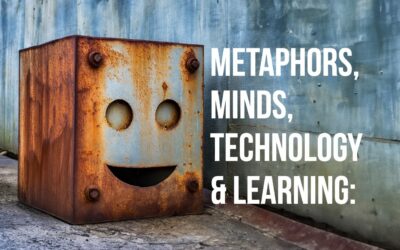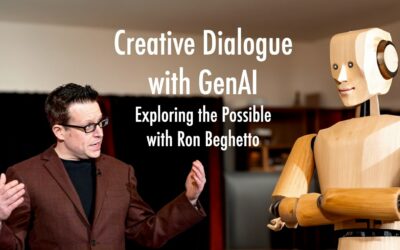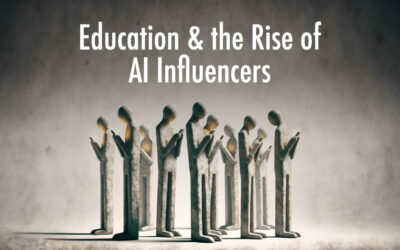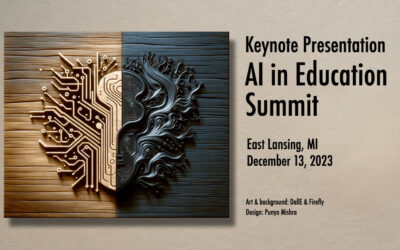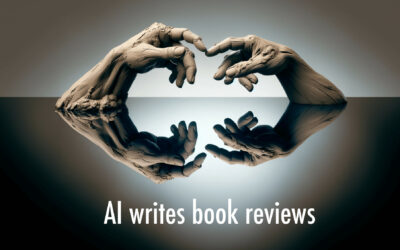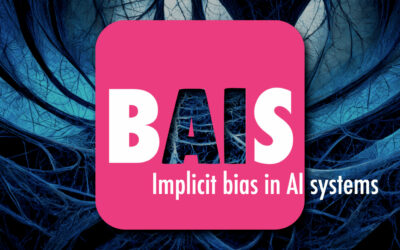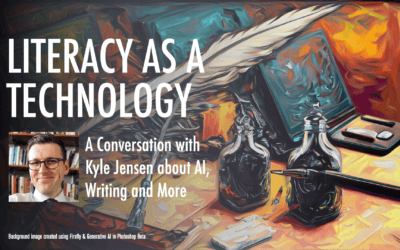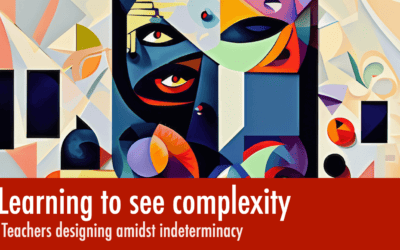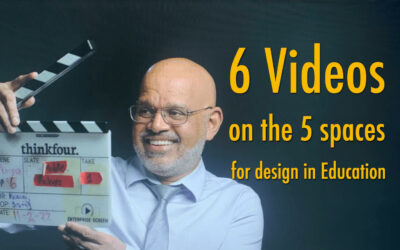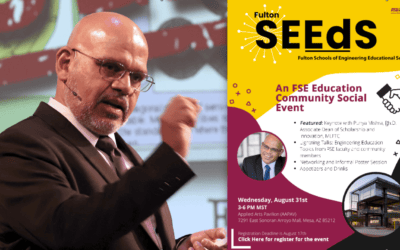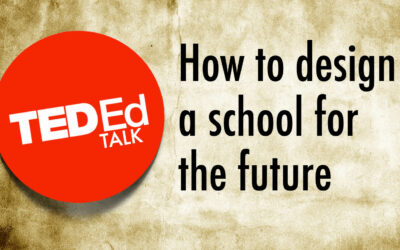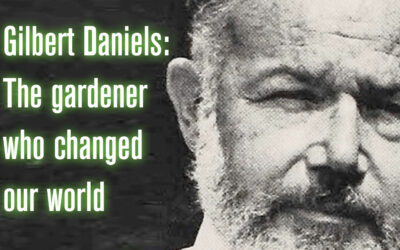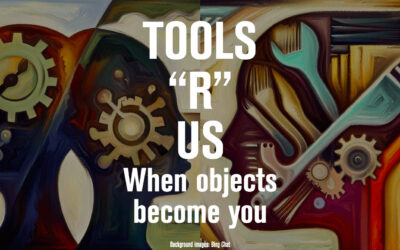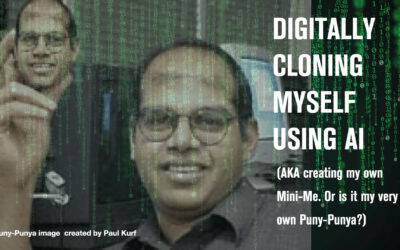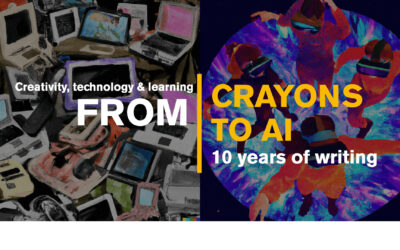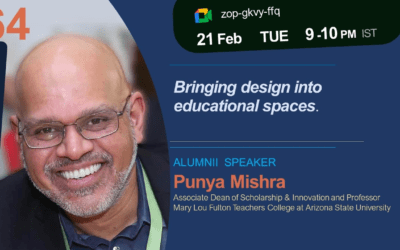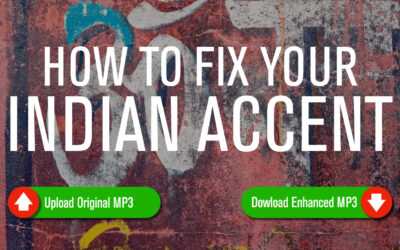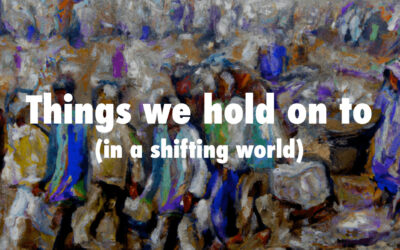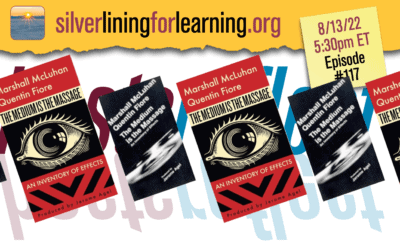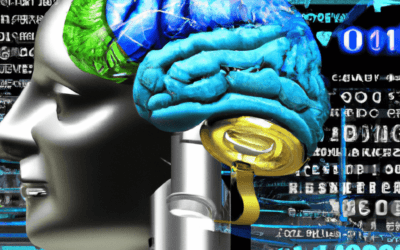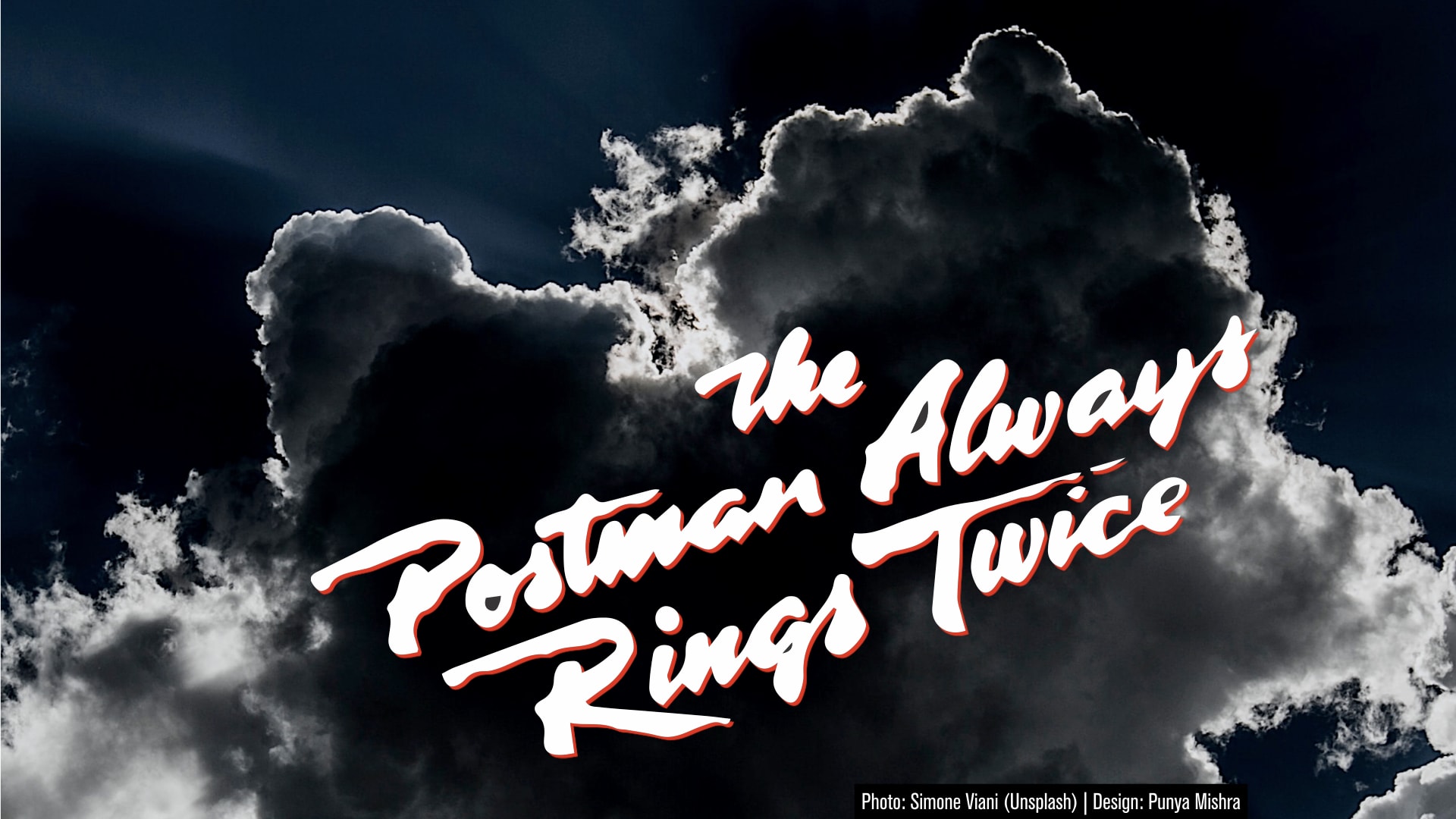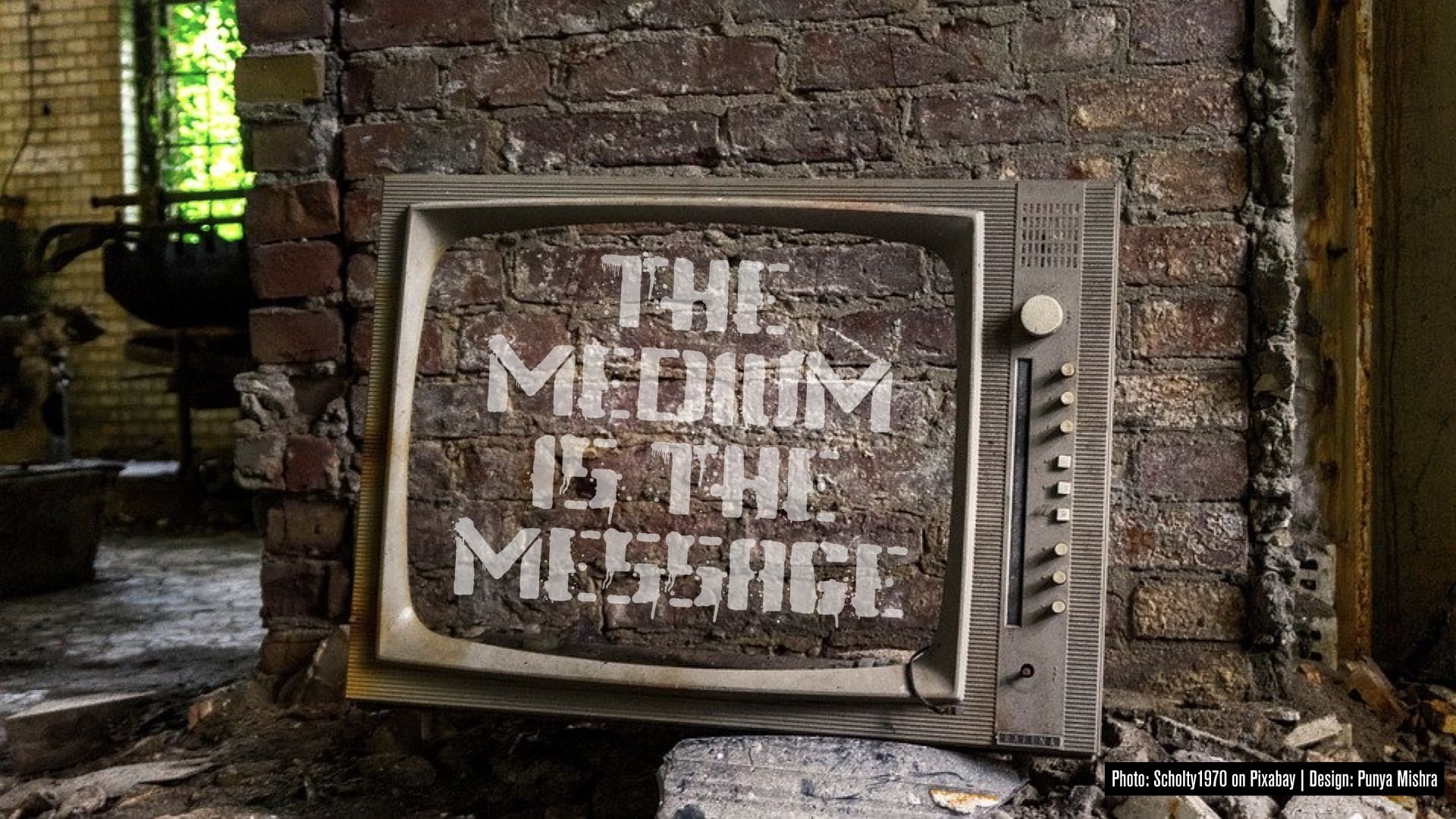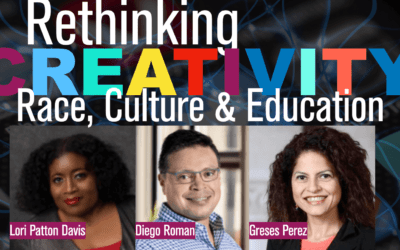Note: The shared blogging experiment with Melissa Warr and Nicole Oster continues. This time we delve into metaphors of the mind, technology and generative AI. The core idea and first draft came from Melissa, to which I contributed a substantial rewrite. The final...
Who speaks for the university? Social fiction as a lens for reimagining higher education futures
Note: Image above created using Adobe Firefly, Photoshop and composed in Keynote. A few years ago, I had the pleasure of connecting with author Dr. Phoebe Wagner through the Center for Science and the Imagination at Arizona State University. We discussed her...
Creative dialogue with Generative AI: Exploring the Possible with Ron Beghetto
As part of our ongoing series for the journal TechTrends exploring the intersections of technology, education, and creativity, we have recently turned our focus to the potential impacts of generative AI (GenAI) on these domains. Our latest article features a...
Education & the Rise of AI Influencers
I have been thinking hard about the nature of generative AI, what sets it apart from other technologies that have come in the past. It seems to me there are two key factors. The first is its ability to engage in dialogue, in natural language and the second are its...
Keynote Presentation: AI in Education Summit
Note: The image above is the result of a two-stage creative process—done in collaboration with AI. Dall-E was tasked, over multiple iterations, to craft a woodcut-style image, to abstractly capture the idea of AI and education, with dark and light motifs, aiming to...
AI writes book reviews
Here is the title and abstract for a book review that was just published in the Irish Journal of Technology Enhanced Learning Preparing Ourselves for Artificial Intelligence: A Review of The Alignment Problem and God, Human, Animal, Machine Abstract: In this article,...
BAIS: Implicit Bias in AI systems
I don't usually post about articles written by other people (however much I may like the study or the authors) but I am making an exception this time - mainly because I believe that this is a critically important piece of research that deserves wider recognition. In...
The new convergence
I recently received an email from dean recommending this post titled Thoughts on Now and Then by Andrew Hickey. In this extended essay Hickey provides his thoughts on the new Beatles remake, Now and Then. The essay is a thoughtful and loving analysis of human...
Literacy as a Technology: A Conversation with Kyle Jensen about AI, Writing & More
Welcome back to our column series, exploring the nexus of technology, creativity, and education. We've spoken with experts like Chris Dede from Harvard and Ethan Mollick from Wharton, focusing on how AI is reshaping creativity and education. We're in a pivotal era of...
Learning to see complexity: Teachers designing amidst indeterminacy
Note: The image above was generated by Adobe Firefly and edited using Photoshop beta. Teaching is a profession steeped in complexity. This complexity manifests in various ways: the diverse skill sets, interests, and backgrounds students bring to the table; the...
The joy of learning: A reflection
What is this thing called learning? What does it mean to learn something? What makes us want to learn? Why is it fun? Why do we want to know? Even as educators, we often don't take the time to ask ourselves these foundational questions. So it is rewarding when we get...
6 Videos (on the 5 spaces for design in Education)
Learning Sparks is a new initiative at ASU that feature short, 5-minute, videos showcasing the expertise of a range of ASU faculty members. These videos are carefully crafted, with high-production values seeking to capture big ideas in bite-sized chunks. A few months...
Talk at Fulton School of Engineering
Last August I was invited to speak at an event organized by the Ira Fulton School of Engineering's Learning and Teaching Hub. For some reason I had not posted about it — so better late than never... here it is, a 30 min talk followed by QnA....
TED talk: How to design a school for the future
My TED talk, titled How to design a school for the future just went live this morning. Sadly, I was traveling in India when the recordings were scheduled so I missed the whole "standing on the red-dot" looking like a thought leader who will give a talk that will...
Gilbert Daniels, the gardener who changed our world
Note: I wrote and submitted this piece as an op-ed to the Indianapolis Star to be published on April 14, 2023, exactly 3 years after they had published Gilbert Daniels' obituary. It would have helped set the record straight about his amazing contribution to the world...
Tools “R” Us: When objects become you
Danah Henriksen shared an article with me recently “When objects become extensions of you.” It is an interesting piece arguing that “Whether they are tools, toys, or mirror reflections, external objects temporarily become part of who we are all the time.” Essentially,...
Using AI to digitally clone myself (AKA creating a Puny-Punya)
Note: The photo-manipulated image of me holding my own head was created almost 20 years ago by Paul Kurf, a student in my learning by design, class! Image design & layout, Punya Ethan Mollick is a professor at Wharton and he has been doing some of the most...
From Crayons to AI: New article (10 years of writing)
Ten years ago, we, The Deep Play Research Group, were invited to write a regular series of articles for this journal exploring the relationship between technology, creativity and learning. To celebrate this anniversary, we decided to write two summary/ synthesis...
Bringing Design to Education: IDC Talks
I was recently invited to speak at a series organized by alumni of the IDC School of Design, IIT Powai. As an alum of the same institution it was a great honor to be invited. You can see the entire series here (and I must say there are some awesome speakers there). My...
How to fix your Indian accent using AI
Featured image design © Punya Mishra (background image courtsey PxHere) There are many meanings to the phrase "having a voice." It can mean whether you are present and acknowledged within a space - but most literally it means what you say and how you speak? And...
Aesthetics and science education: Beauty at Work podcast
Beauty at Work is a podcast that "explores how beauty shapes our lives and the work that we do" hosted by Brandon Vaidyanathan, Associate Professor of Sociology at The Catholic University of America. In its first season the focus is on beauty in science. As part of...
15 years of blogging
January 1, 2008. 15 years ago, almost to the day - I posted my first note to this website (screenshot below). My first blog post, dated Jan 1, 2008 I have had a web presence since 1998 - hand coded, HTML pages, traces of which are still available on the Wayback...
Modeling human behavior: The new dark art of silicon sampling
A couple of months ago I had written this post, On merging with our technologies – which was essentially quotes from a conversation Ezra Klein had with the novelist Mohsin Hamid. I finished the post with a quote speaking the dangers of predictive technologies on human...
Things we hold on to (in a shifting world)
Title image created using Dall E 2, with input by Punya Mishra My colleague Jill Koyama shared an essay published in the Refugee Research Online journal, titled "It's all in the bag: Refugees and Materiality."...
McLuhan on Silver Lining for Learning (5/3)
This is the fifth of what was supposed to be a three post-series about how media influence our thinking. The first post, uses the invention of writing and print to unpack the meaning of McLuhan’s statement, “The medium is the message.” The second post, focuses on a...
Uncertainty, Creativity & Mindfulness: New chapter
Danah Henriksen, Carmen Richardson, Natalie Gruber and just published a chapter (titled: Uncertainity, Creativity & Mindfulness: Opening Possibilities and Reducing Restrictions Through Mindfulness) in the edited volume: Uncertainty: A Catalyst for Creativity....
On merging with our technologies (Unpacking McLuhan 4/3)
This is the fourth of what was supposed to be a three post-series about how media influence our thinking. The first post, uses the invention of writing and print to unpack the meaning of McLuhan’s statement, “The medium is the message.” The second post, focuses on a...
The Postman always rings twice: Unpacking McLuhan (3/3)
This is the third of three blog posts about how media influence our thinking. This is the second of three blog posts about how media influence our thinking. The first post, uses the invention of writing and print to unpack the meaning of McLuhan’s statement, “The...
Unpacking McLuhan’s “The medium is the message” (1/3)
This is the first of a series of blog posts about how media influence our thinking. This, the first post, uses the invention of writing and print to unpack the meaning of McLuhan’s statement, “The medium is the message.” The second post, focuses on a story by Ted...
Rethinking Creativity, Race, Culture & Education
Episode 115 (dated July 30, 2022) of the Silver Lining for Learning webinar series focused on critiquing existing research on creativity - which for the most part has focused on the psychological and cognitive aspects of creativity. The guests on the show (Lori Patton...

